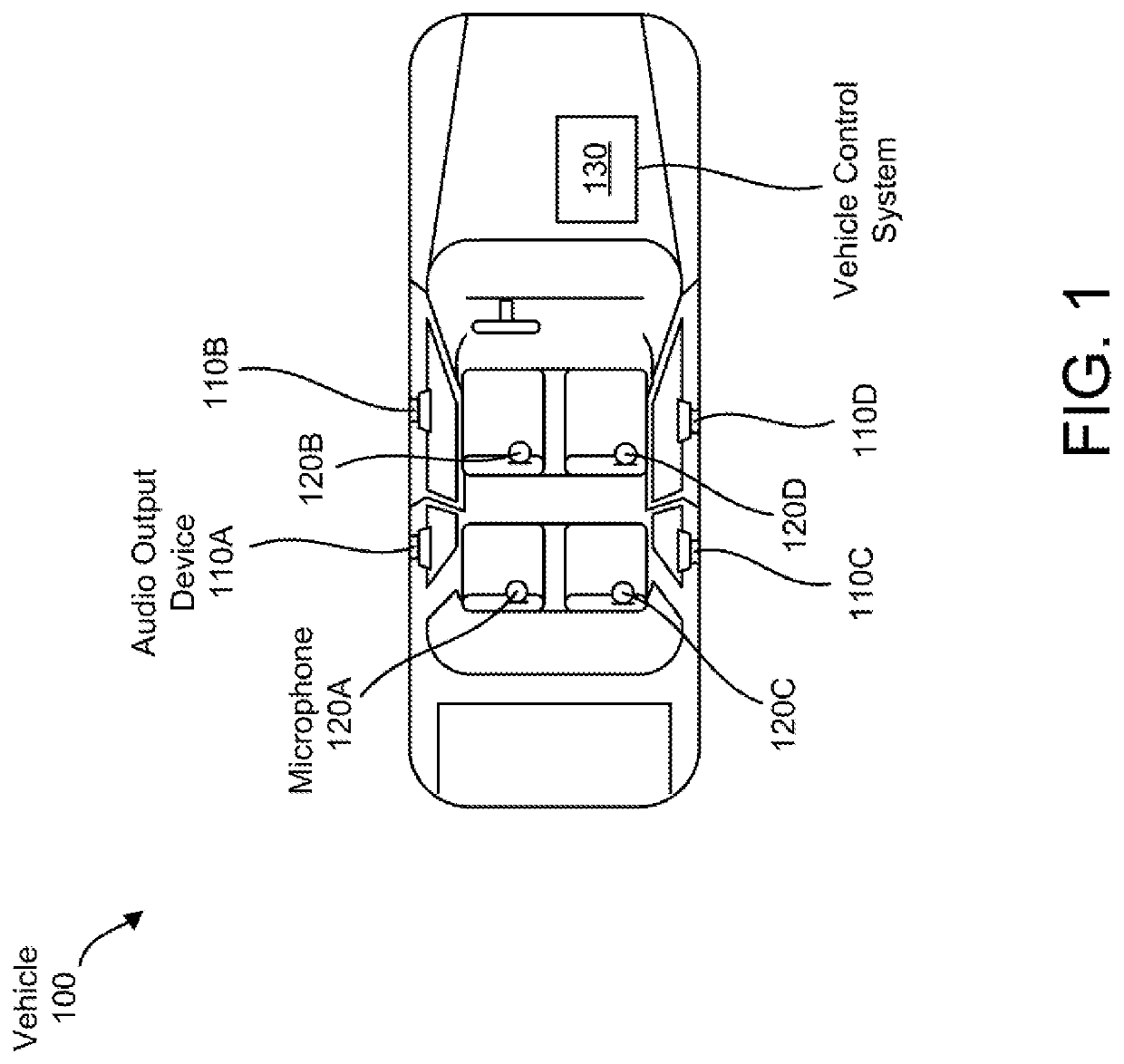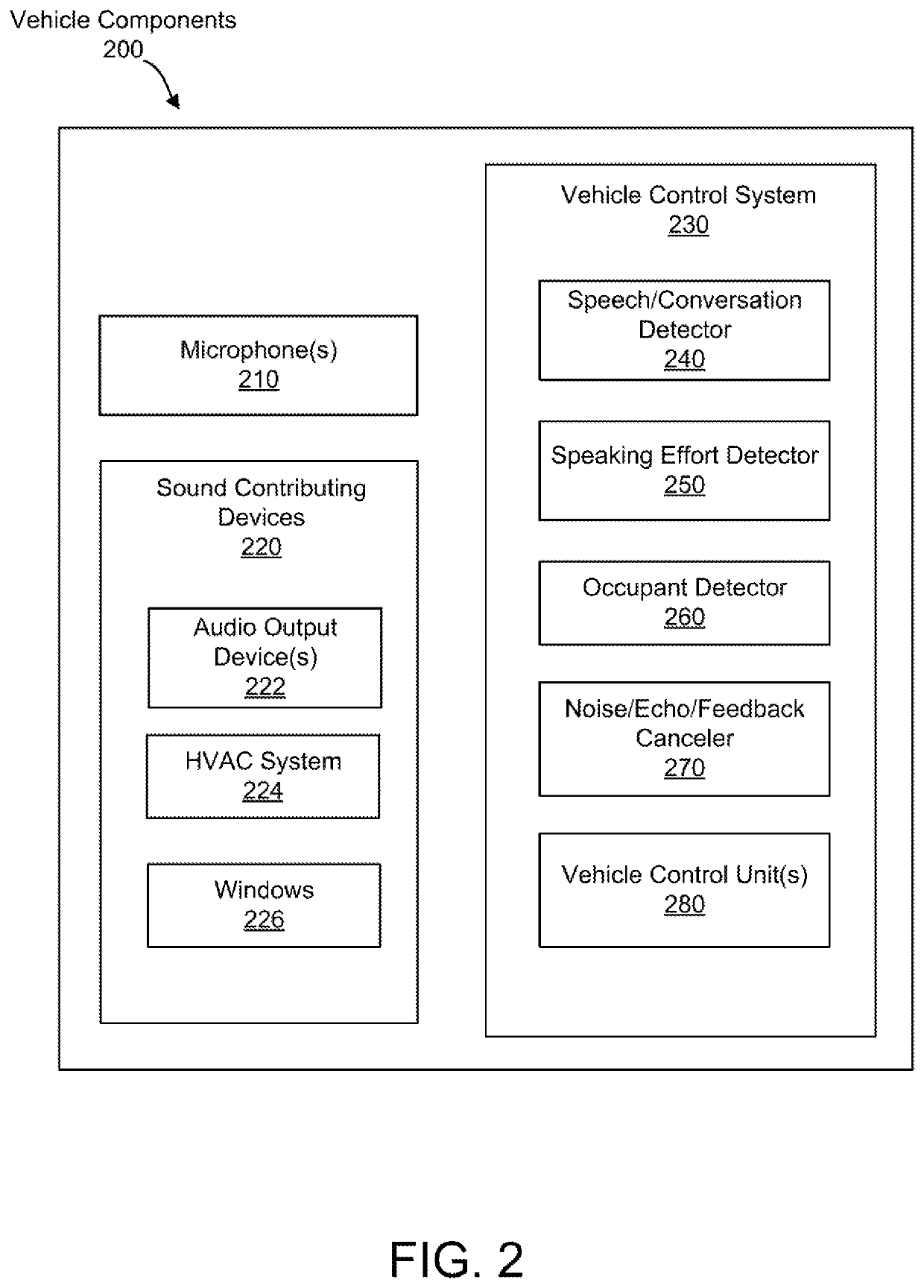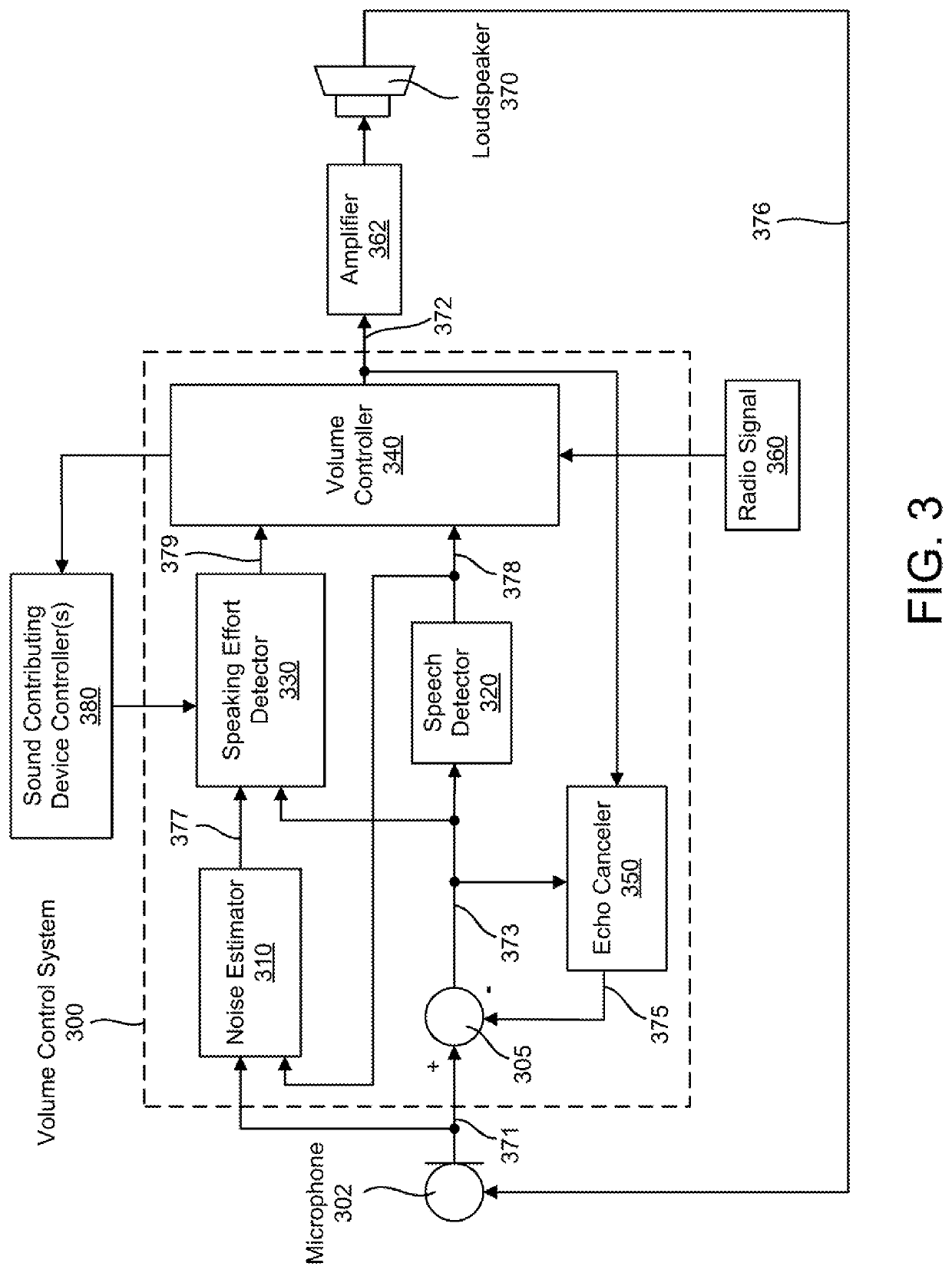Conversation dependent volume control
a volume control and volume control technology, applied in the field of conversation dependent volume control, can solve the problems of affecting the audibility of speech, affecting the sound quality of speech, and distracting radio sound, so as to increase the speaking effort, and increase the speaking volume
- Summary
- Abstract
- Description
- Claims
- Application Information
AI Technical Summary
Benefits of technology
Problems solved by technology
Method used
Image
Examples
Embodiment Construction
[0022]Several illustrative embodiments will now be described with respect to the accompanying drawings, which form a part hereof. While particular embodiments, in which one or more aspects of the disclosure may be implemented, are described below, other embodiments may be used and various modifications may be made without departing from the scope of the disclosure or the spirit of the appended claims.
[0023]Certain embodiments are described in connection with a vehicle environment. However, the embodiments can be applied to other types of physical environments including, for example, indoor environments comprising one or more rooms. Thus, the embodiments can be implemented on a smart speaker or home automation system, a conference system in an office, or other control systems or devices capable of adjusting the operating state of a sound contributing device.
[0024]As indicated earlier, it may be desirable to reduce the volume of noise sources when there is a conversation between two o...
PUM
 Login to View More
Login to View More Abstract
Description
Claims
Application Information
 Login to View More
Login to View More - R&D
- Intellectual Property
- Life Sciences
- Materials
- Tech Scout
- Unparalleled Data Quality
- Higher Quality Content
- 60% Fewer Hallucinations
Browse by: Latest US Patents, China's latest patents, Technical Efficacy Thesaurus, Application Domain, Technology Topic, Popular Technical Reports.
© 2025 PatSnap. All rights reserved.Legal|Privacy policy|Modern Slavery Act Transparency Statement|Sitemap|About US| Contact US: help@patsnap.com



